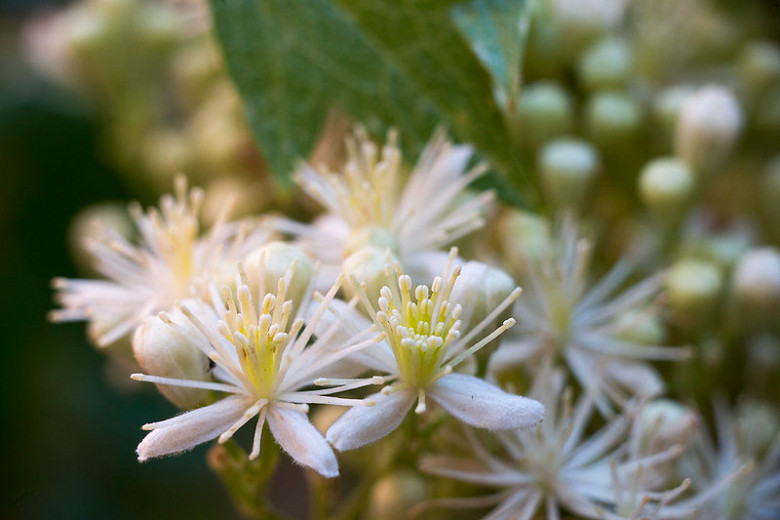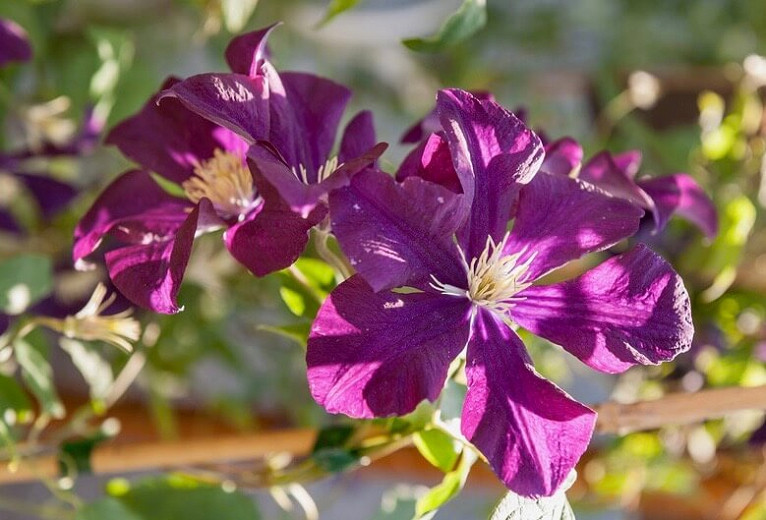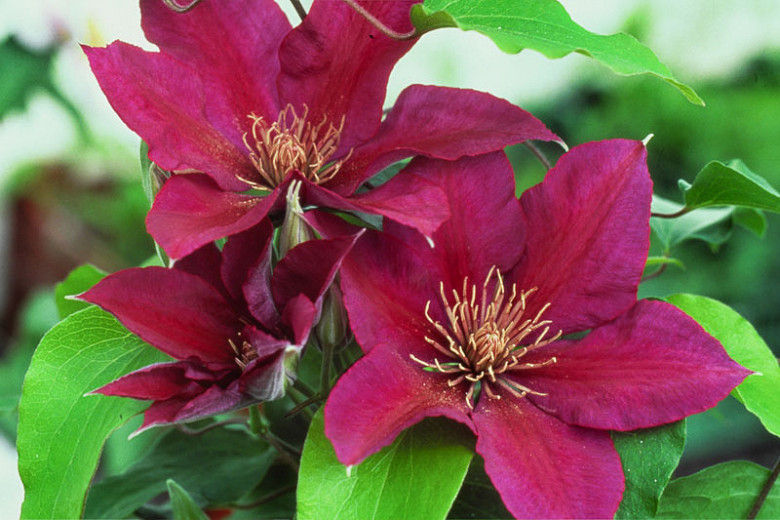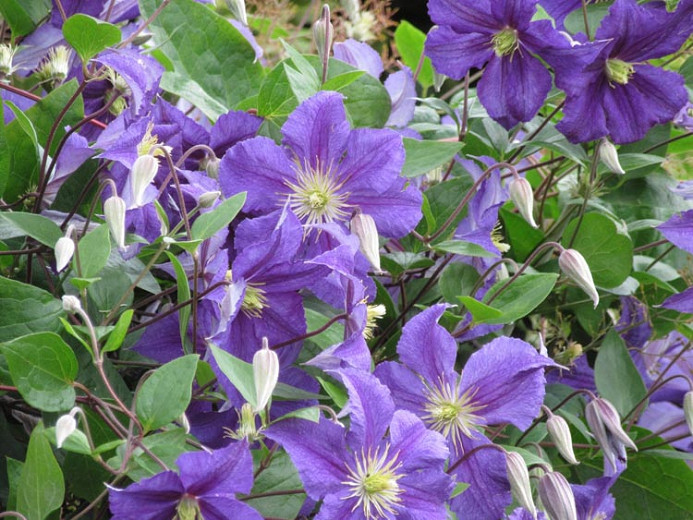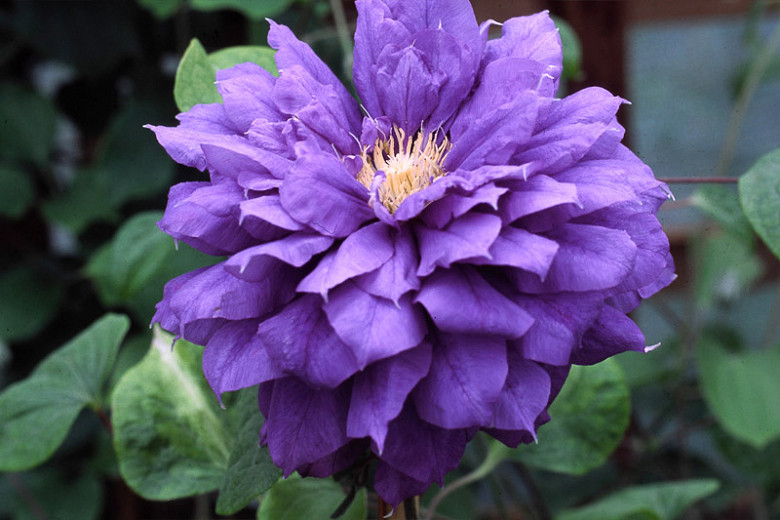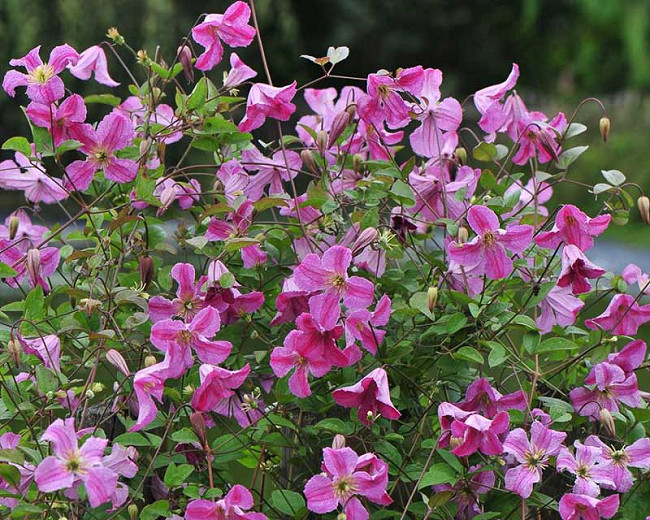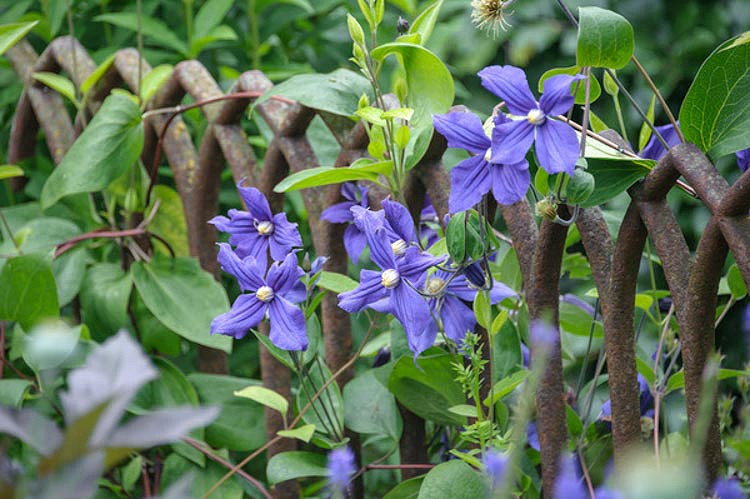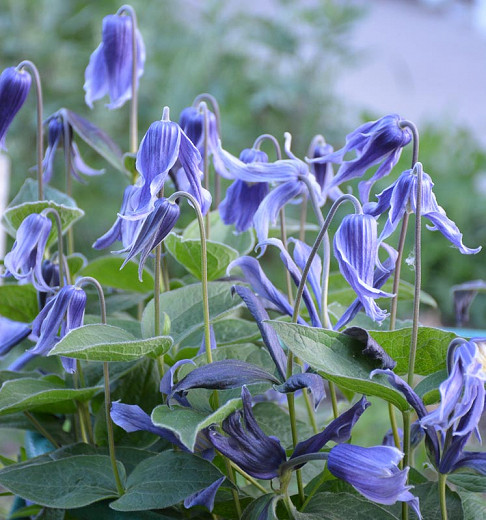Clematis ligusticifolia (Western White Clematis)
Clematis ligusticifolia (Western White Clematis) is a robust, woody or semi-woody, deciduous climber with showy clusters of fragrant, creamy-white flowers, 1 in. wide (2.5 cm), from mid-spring to late summer (depending on geographic location). The blossoms are so profuse that they almost cover the foliage of pinnately compound leaves adorned with 5-7 leaflets. Even after flowering is over, this vine remains attractive, thanks to the plume-like seedheads left by the passing female flowers, therefore providing winter interest. Widely adaptable, tough, drought tolerant, and disease-resistant, Western White Clematis can be trained on a trellis or allowed to climb a tree. It also provides excellent stabilization of streambanks and is useful for erosion control and hillside plantings. Western White Clematis attracts birds, hummingbirds, and butterflies. Small birds and rodents use the canopy for cover. The flowers are pollinated by bees and other insects. Native Americans used the root as a horse stimulant. They also chewed the plant to remedy colds and sore throats.
- Grows up to 3-30 ft. long (1-9 m). Western clematis is long-lived and spreads primarily via seed in the wild, but also via vegetative means (layering).
- Thrives in deep, moist, well-drained soils, in full sun or part shade. Ideally, Clematis prefer having their 'heads in the sun and their feet in the shade'. In very dry, hot areas, provide afternoon shade and mulch to keep the roots cool. Drought tolerant once established.
- This Clematis belongs to the third group of Clematis – a group including Clematis which flower in late summer on growth made in that season. They should be pruned in late winter or early spring and require 'hard pruning': simply cut back the stems to a pair of strong buds about 1ft. (30 cm) above ground level before growth begins in early spring. Cut back immediately after bloom where self-sown seedlings are a problem.
- No serious pest or disease issues. Browsed by deer.
- Propagation by seed, softwood, or hardwood cuttings.
- Native to North America, it is widespread across the western United States.
- All parts of this plant are poisonous. Severe pain in the mouth if eaten, skin irritation if touched or inhaled.
- Toxic to dogs, toxic to cats, toxic to horses.
Requirements
| Hardiness | 5 – 7 |
|---|---|
| Climate Zones | 1, 1A, 1B, 2, 2A, 2B, 3, 3A, 3B, 4, 5, 6, 7, 8, 9, 14, 15, 16, 17, 18, 19, 20, 21, 22, 23, 24 |
| Plant Type | Climbers |
| Plant Family | Clematis |
| Exposure | Full Sun, Partial Sun |
| Season of Interest | Spring (Mid,Late)Summer (Early,Mid,Late)Fall |
| Height | 3' – 30' (90cm – 9m) |
| Spread | 2' – 6' (60cm – 180cm) |
| Water Needs | Average |
| Maintenance | Low |
| Soil Type | Clay, Loam, Sand |
| Soil pH | Acid, Alkaline, Neutral |
| Soil Drainage | Moist but Well-Drained |
| Characteristics | Fragrant, Showy |
| Native Plants | United States, California, Midwest, Kansas, Nebraska, North Dakota, South Dakota, Northeast, Pennsylvania, Pacific Northwest, Idaho, Oregon, Washington, Rocky Mountains, Colorado, Montana, Utah, Wyoming, Southwest, Nevada, Arizona, New Mexico, Oklahoma |
| Tolerance | Drought |
| Attracts | Bees, Butterflies, Hummingbirds |
| Garden Uses | Arbors, Pergolas, Trellises, Walls and Fences |
| Garden Styles | Informal and Cottage, Prairie and Meadow |
